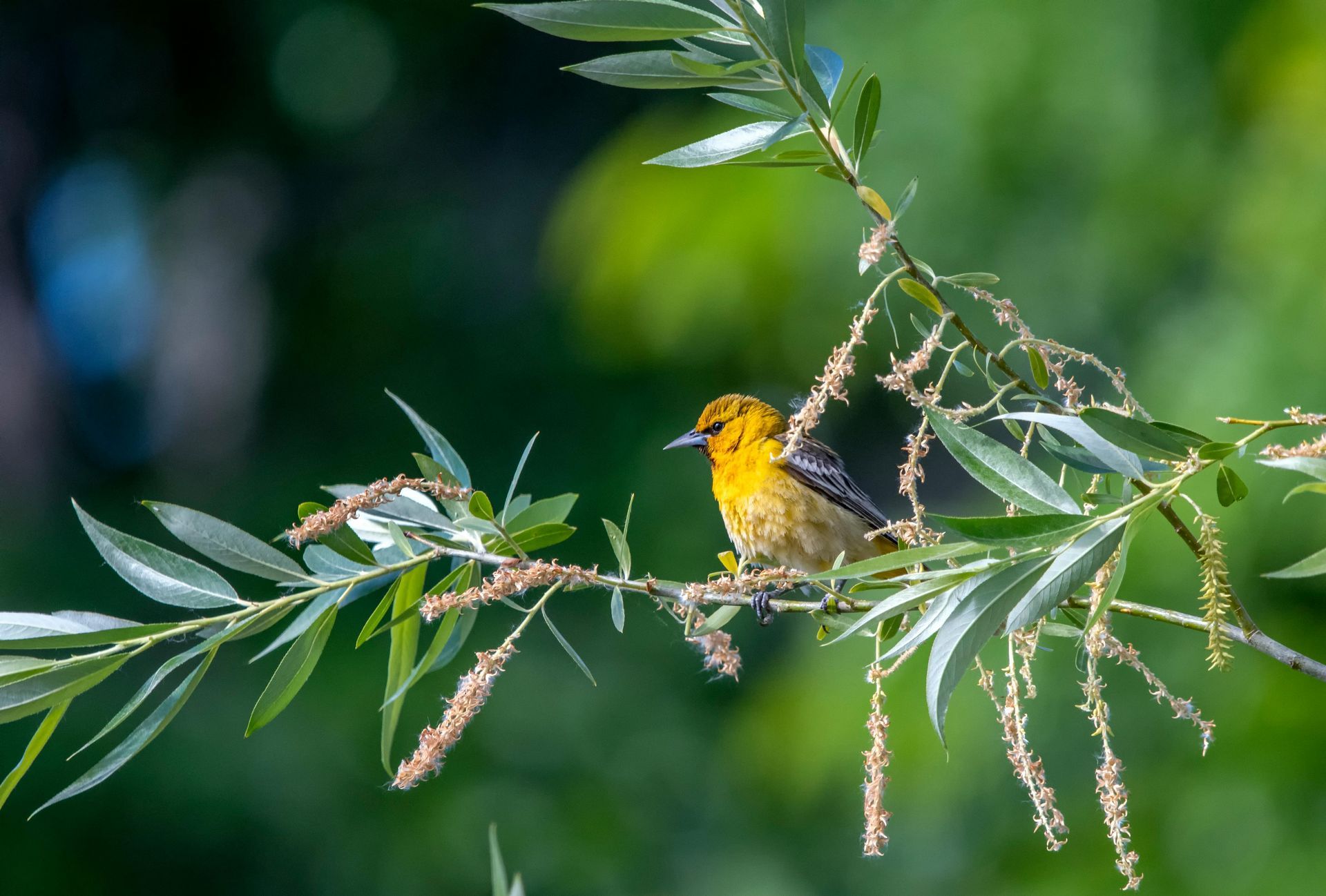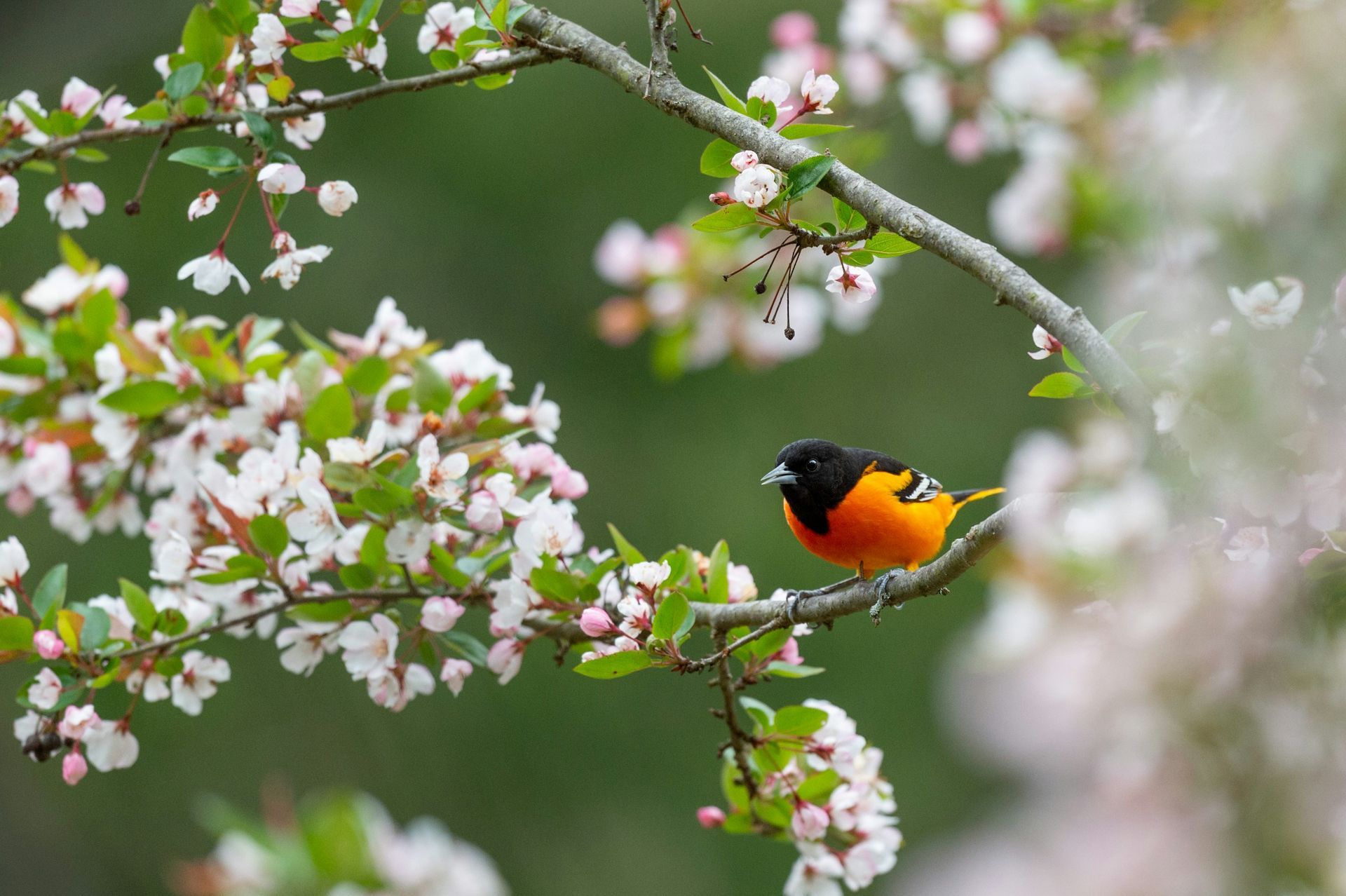Orioles are vibrant, medium-sized songbirds known for their striking plumage and melodic songs. Found throughout North and Central America, orioles thrive in woodlands, open forests, and suburban gardens. They play a key role in ecosystems by controlling insect populations and helping pollinate plants.
Male orioles are typically more brightly colored than females, with shades of orange, yellow, and black, while females are more subdued in coloration. Common species include the Hooded Oriole and the Bullock’s Oriole. Orioles feed on fruit, nectar, and insects, often foraging in the tree canopy and are frequent visitors to backyard feeders that offer nectar and fruit.
During the breeding season, female orioles weave intricate hanging nests from plant fibers, often suspending them from the tips of tree branches. They lay 3-7 eggs per clutch, and both parents participate in feeding the chicks. Orioles are migratory, traveling long distances between their breeding and wintering grounds.
Natural predators include hawks, snakes, and larger birds, while human-related threats such as habitat loss, pesticide use, and window collisions also pose risks.

For your safety and the well-being of wildlife, please observe animals from a distance and avoid touching or disturbing them. If you encounter an animal that appears injured or in distress, contact a licensed wildlife rescue organization for guidance before intervening.
Found An Animal? Not sure how to help a wild animal in need? Learn when to step in, who to call, and how to help safely.
Did You Know?
- Orioles are among the few birds that can digest the sugars in fruit and nectar.
- Male orioles can learn up to 40 different songs and often sing to defend their territory.
- Some orioles weave their nests using materials like horsehair and spider silk for added strength.
- Orioles are highly attracted to the color orange and will seek out feeders and flowers of that hue.
- Bullock’s Orioles are known for their acrobatic foraging, often hanging upside-down to reach fruit.
- Orioles help control garden pests by eating caterpillars and other harmful insects.
- They are closely related to blackbirds and meadowlarks.
- Orioles are capable of recognizing individual humans who provide food.
- Their nests can be over a foot long and take up to a week to construct.
- A group of orioles is called a “pitch”! Hooded orioles are short-distance migrators that breed right here in Santa Barbara and spend their winters down in Mexico.
Problems Faced In The Wild
- Habitat Loss: Urban development reduces nesting and foraging areas.
- Pesticide Use: Chemicals reduce insect populations and can poison orioles indirectly.
- Window Collisions: Reflective glass poses a significant danger during flight.
- Climate Change: Altered weather patterns affect migration timing and food availability.
- Predation: Free-roaming cats and other predators pose significant threats.
- Human Disturbance: Increased human activity near nesting sites can reduce breeding success.
Tips For Cohabitation
- Plant Native Trees and Shrubs: Provide natural foraging and nesting opportunities.
- Offer Fruit and Nectar Feeders: Attract orioles by providing oranges, jelly, and nectar.
- Avoid Pesticides: Use eco-friendly pest control methods to protect insect populations.
- Install Window Decals: Reduce window strikes by making glass more visible to birds.
- Keep Cats Indoors: Protect orioles and other songbirds by reducing predation.
- Educate Others: Share the importance of orioles in controlling pests and supporting pollination.



